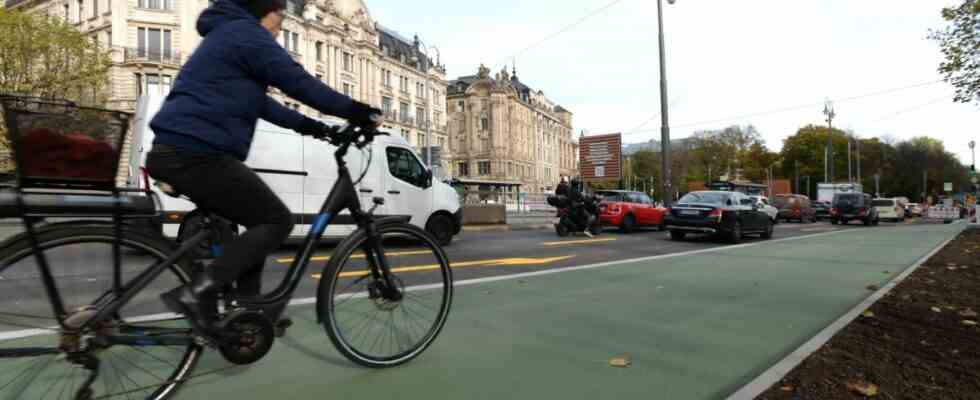The color green is generally considered popular. After all, everyone likes to drive out into the countryside, and of course that’s only possible when the traffic lights on the arterial road show green. Even Johann Wolfgang von Goethe valued green, which he found so pleasantly neutral, that the eye found something really satisfying in it. Finally, in his color theory, the poet prince worked as a Interior stylist from the very beginning: “That’s why the green color for the wallpaper is usually chosen for rooms in which one is always present.”
Well, old Goethe may have been a clever man. But of course he could not have guessed that at some point the bicycle and bicycle lanes would be invented, that his favorite wallpaper would lose its neutrality 200 years later and become the symbol of political leg-biting in Munich. The building department has just marked the first section of the Altstadt-Radlring in green, to the great annoyance of the CSU. Because she senses party-political reasons behind it, after all, a green-red majority calls the shots in the city council. So it’s a good thing that some sections that could potentially get tricky for cyclists are marked in red.
A green-red bike path: That’s a, well, red flag for the Christian Socialists. Snorting furiously like an Andalusian fighting cow, they railed against the “pharaoh mania” and “immortalization mania” of the Greens. The city government is narcissistic and ruthless. The parliamentary group also expresses concerns that people with green-red blindness could have problems with the cycle path.
It remains to be seen whether this will bring new votes to the CSU – after all, every twelfth man and every 200th woman has a visual impairment. Incidentally, the CSU did not even bring up the idea of marking the cycle path with their own political color, they should also be aware that black asphalt on black asphalt does not exactly have the most dazzling signal effect. But maybe she will suggest a white and blue diamond pattern for the Altstadtring. as Munich Beer Garden Route the whole thing could certainly not be badly marketed.
But now the people of Munich see green. Goethe, who was in Munich in 1786, didn’t like the city, fled after a day and never came back, might be able to reconcile with her a bit. He enthusiastically described the effect of green on the eye with the result: “You don’t want to go any further and you can’t go any further.” However, that could get him bad in modern Munich if he is not careful. Munich cyclists really don’t understand the fun of pedestrians who stop on cycle paths. “F… you, Goethe” is probably the most harmless thing he would hear.

